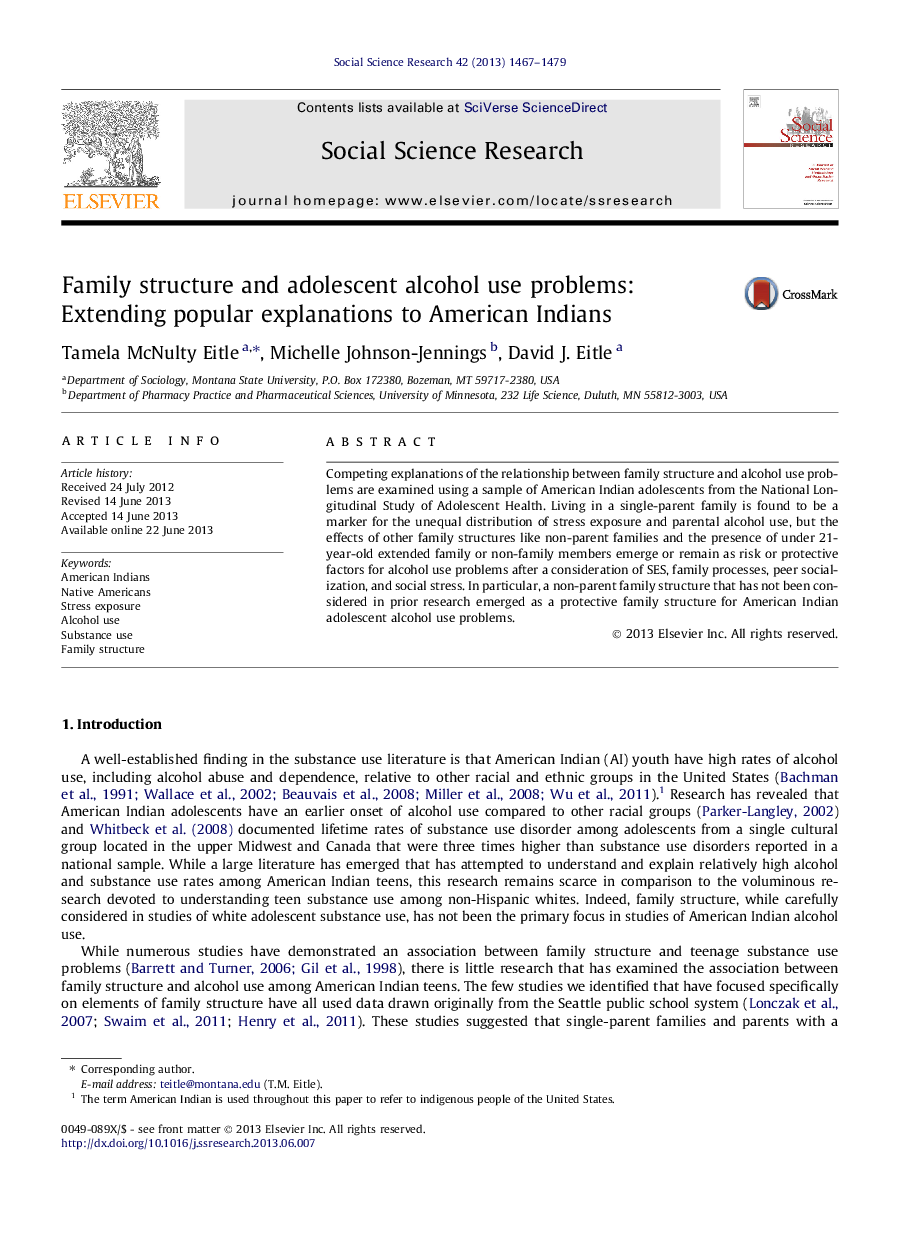| Article ID | Journal | Published Year | Pages | File Type |
|---|---|---|---|---|
| 955982 | Social Science Research | 2013 | 13 Pages |
·We explore why family structure predicts alcohol problems for American Indian youth.·Single parent family is not a risk factor after considering stress and parental use.·Non-parent family was protective after considering stress and extended family.·Extended family members under the age of 21 are a risk factor for alcohol problems.
Competing explanations of the relationship between family structure and alcohol use problems are examined using a sample of American Indian adolescents from the National Longitudinal Study of Adolescent Health. Living in a single-parent family is found to be a marker for the unequal distribution of stress exposure and parental alcohol use, but the effects of other family structures like non-parent families and the presence of under 21-year-old extended family or non-family members emerge or remain as risk or protective factors for alcohol use problems after a consideration of SES, family processes, peer socialization, and social stress. In particular, a non-parent family structure that has not been considered in prior research emerged as a protective family structure for American Indian adolescent alcohol use problems.
